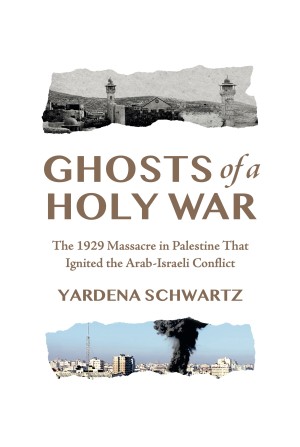In the coming years, there will be no shortage of books written about October 7th, but few will be as personal and riveting as Amir Tibon’s The Gates of Gaza. The reason Tibon was able to write such an affecting book is because he chose depth over breadth. Rather than trying to tell every story from October 7th, he talks about his family’s ordeal on that day. And rather than telling the complete history that led up to the attack, the book chronicles the story of Israel through Tibon’s home community, Kibbutz Nahal Oz, and how the kibbutz’s location, at the border of Gaza, shaped who they were and are.
Tibon is a renowned journalist who writes for Haaretz. With journalistic care and detail, he shares an almost minute-by-minute account of waking up to missile sirens, rushing into the bomb shelter, and hiding there as carnage raged outside. Tibon paints a picture of a parent desperately trying to keep his two children quiet while hoping not to scar them in the process. He also recreates the events that led to his salvation. He talks about his father’s courageous quest to make his way to the kibbutz to save his family, as well as the stories of many other heroes. He honors the legacy of those who died protecting roadways, and highlights some of the impossible decisions that lay before Israelis that day — like whether to drive toward the sound of gunfire in the hopes of saving lives. To piece all the details together, Tibon conducted dozens of interviews with survivors.
Tibon intersperses his personal account with chapters that tell the story of Gaza generally. He traces the region’s history from its time as part of Egypt after the Independence Day War, to when it became Israel’s disputed territory after the Six-Day War, to today — when the strip is under blockade and conflagrations seem to break out every few years. Throughout the book, Tibon charts the many wrong turns made by leaders and speaks about the numerous times Israel came close to peace but fell short. Because October 7th becomes the stakes of these false starts, it makes Israel’s failure to end the conflict so tragic. One walks away from the book feeling that, for myriad reasons, things could have worked out differently.
At each turn, Tibon links Gaza’s history with the story of his kibbutz. The book’s title takes its name from a speech delivered by Moshe Dayan after a terrorist attack in 1956. Reflecting on the burden that border communities like Nahal Oz carry, Dayan acknowledged that violence would be a fact of life for these frontiersmen. Ironically, the kibbutz movement was and remains one the bastions of left-wing, dovish, peace-loving activism; yet despite their worldview, the “gates of Gaza weighed too heavily on [their] shoulders and overcame [them].” As such, Tibon doesn’t just catalog the wars along the border, but talks about the weddings those wars interrupted, the trauma they caused children, and the people who decided, in spite of the violence, to stay and raise their families in Nahal Oz.
The Gates of Gaza is one of the most unique books to examine the history, legacy, and impact of the Israeli – Palestinian conflict. Part memoir, part ethnography, and part historical survey, it is a new and refreshing look at a well-trodden topic.
Rabbi Marc Katz is the Rabbi at Temple Ner Tamid in Bloomfield, NJ. He is author of the books Yochanan’s Gamble: Judaism’s Pragmatic Approach to Life (JPS) chosen as a finalist for the PROSE award and The Heart of Loneliness: How Jewish Wisdom Can Help You Cope and Find Comfort (Turner Publishing) which was chosen as a finalist for the National Jewish Book Award.




